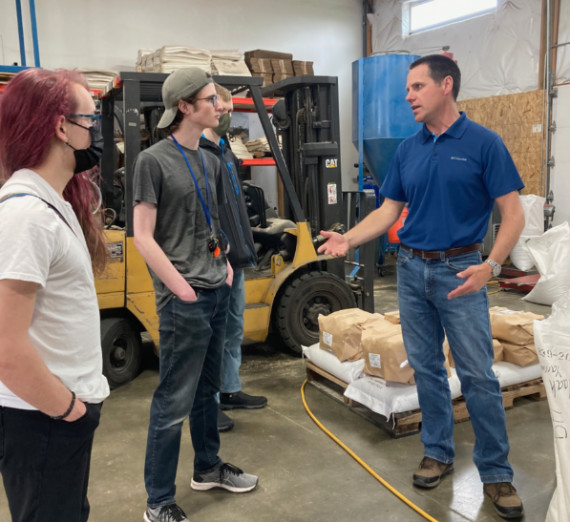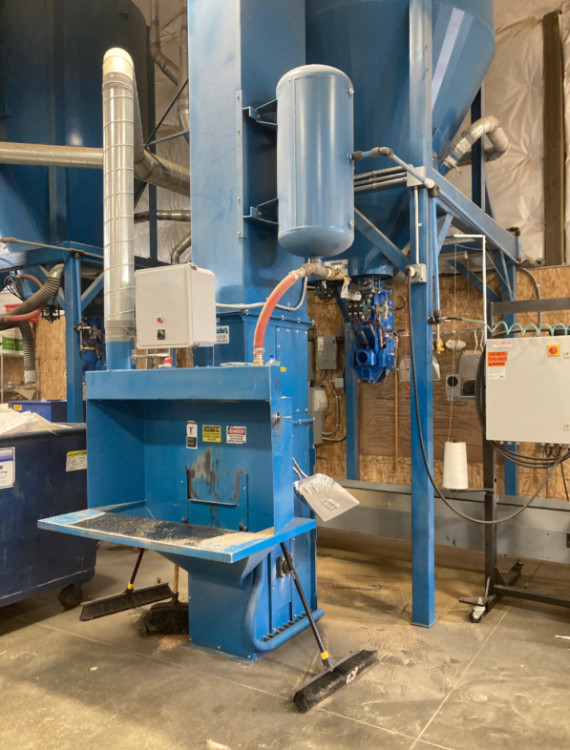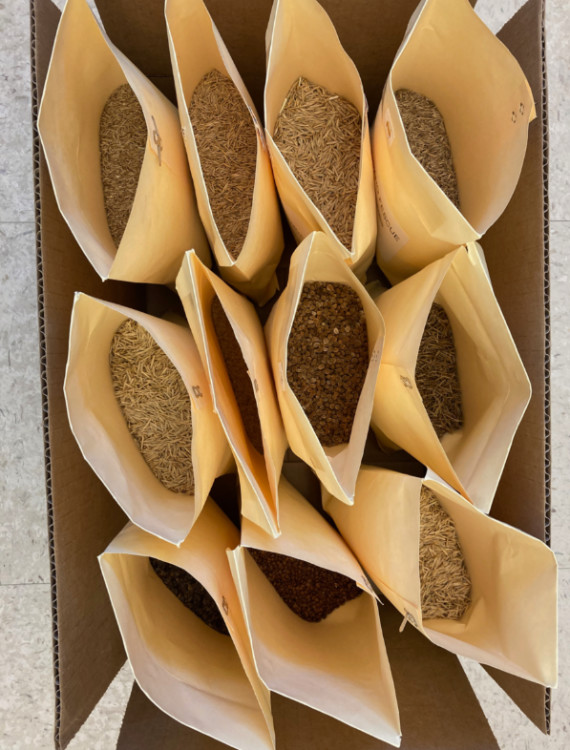About
Gonzaga’s Jesuit, Catholic, Humanistic education will challenge and inspire you.
The Seeds For The Future students conducting research at Gonzaga University in Summer 2022 were able to visit the Clearwater Seed facility on May 16, 2022, and obtained seeds from the company for their summer research projects.
Our first field trip was a visit to Clearwater Seed, a processing and shipment facility, in Spokane. It is located near the Spokane Airport. We were greeted by Orlin Reinbold (the owner) and RJ Schmitt (manager), along with packages with sixteen different kinds of seeds that were donated for our summer experiments.

We were provided a tour of the facility, warehouses, and field plots. We learned about the process of preparing seeds to go out to farmers and land managers. It was interesting to learn that the Inland Northwest is one of the few optimal locations around the globe for growing and processing seeds. Our relatively colder dryer climate allows for efficient ripening of seeds in the field and slows deterioration of seeds, both of which are essential for a seed business.

The main item in the warehouse was a large seed sorting machine. The machine could mix a blend of seeds for various purposes, like a mix to restore the edge of a highway. The machine would also place the seeds into 50 pounds bags.
After this, we went into the other warehouses, where we saw palettes filled with the 50 pound bags of seeds. They were organized into segments of each warehouse by comparative value per bag.
When land managers are trying to restore a natural area that has been wiped out by a wildfire, they often want to buy seed from plants found in that local area. However, that may not be the best way to set that place up for success. Since climates are changing and shifting North, you can’t necessarily expect the same varieties of native species to always be the best option in a given area. With climate change, it is going to get warmer and drier. So, you’re going to need plants that can withstand warmer and drier environments, which may not necessarily be the local varieties.

We were then shown the labeling system for the 50-pound bags. The more valuable seeds were placed into storage rooms to further prevent deterioration. The seed value is determined by the amount of seeds harvested per acre, and the difficulty of acquisition.

The labels seemed to show all the information anyone would need to know, including the foreign trade number. The tags were also printed in multiple languages, indicating that the seeds are likely important and exported worldwide.

We were lucky enough to witness some of the seeds shipped out of the warehouse. It was shipped out through FedEx, and a forklift was used to transfer a palette of bags into a truck.
We talked a bit at the end of our tour about how the seeds were obtained. Most of the seeds grown are raised by local farmers. The farmers determine what to plant by guessing what seeds will be requested the following year. We didn’t realize that the seed industry was a bit of a gambling game—can you predict the future seed needs across the globe?
We hope that our seed research can help seeds establish in reclamation and restoration projects by identifying beneficial microbes that can add in seed germination and seedling establishment.